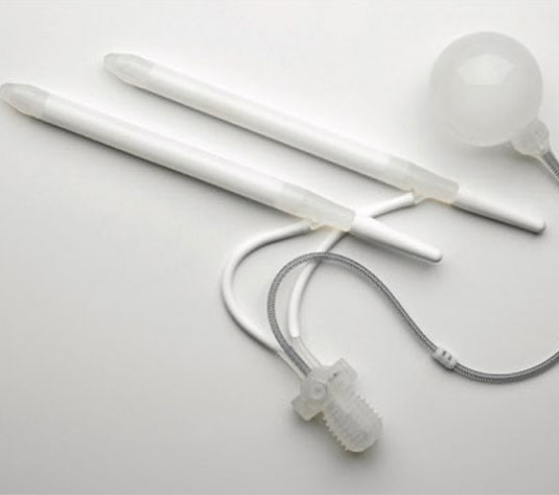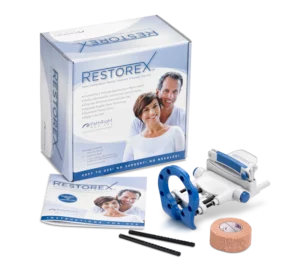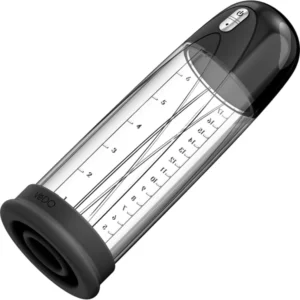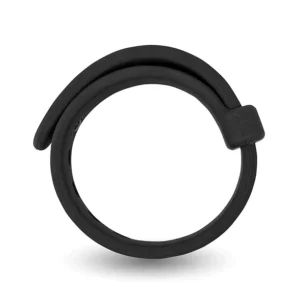
Penile Implant
Penile implants are a permanent surgical option for men with erectile dysfunction (ED). Penile implants are surgically-placed medical devices that produce natural-looking and natural-feeling erections. There are two main types of penile implants: inflatable and semirigid (or malleable). Each type of penile implant comes in a variety of lengths and girths, work in different ways, and have their own pros and cons.
Please speak with your urologist, or healthcare specialist, to determine if you’re a good candidate for the procedure.
How It Works
Penile implants are completely concealed and placed via a small incision. Surgery usually lasts less than one hour and, in most cases, is an outpatient procedure performed under general anesthesia. After surgery, patients may experience pain and soreness at the surgical site but can expect to go home with pain medication and a course of antibiotics to prevent infection. Most patients return to work and resume light activity within 3 to 5 days. Patients will follow up with their physician after approximately 3 weeks to check the incision and learn how to use the device. It typically requires six weeks post surgery before the patient is able to use the implant for the first time.
What it does
Penile implants provide a spontaneous and reliable erection without the use of medication. Once achieved, patients can maintain an erection for as long as desired.
Types of Implants
The most common type of penile implant is the inflatable implant. Just as the name implies, this implant is inflated to create an erection. The three-piece inflatable implant is composed of a water-filled reservoir positioned under the lower abdomen, two cylinders inserted in the penis, and a pump with a release valve placed inside the scrotum. Squeezing and releasing the pump moves the fluid into the cylinders, creating an erection.
The two-piece inflatable implant works similarly, except the reservoir is part of the pump in the scrotum. The two-piece implant is a good option for men with conditions preventing reservoir placement.
Semirigid (or malleable) penile implants consist of semirigid cylinders inserted into the penis. In this case, the penis can be manually lifted for use and manually pushed down after use. Semirigid implants are a good option for men with limited dexterity.
Reasons for use
Penile implants are commonly used when it is unlikely for ED to resolve or improve naturally. Implantation is considered in patients who may be unresponsive to oral medications, have structural disorders of the penis (e.g., Peyronie’s disease), or have experienced tissue loss from cancer or injury. Penile implants allow for more spontaneity since there is no wait time and allows the patient to regain control of their erectile function.
Testimonials
Ready to get started?
The cost of penile implants may range from $3,000 to $20,000 depending on the type of device used and where the surgery is performed. Fortunately, Medicare, as well as most private insurance companies cover penile implants. Coverage can vary and it is recommended that you work with your doctor’s office and insurance carrier to verify benefits prior to receiving the penile implant surgery.
$3,000 – $20,000

Accessory Items
Troubleshooting Guide
Penile implants create a natural-feeling erection, and you control how long it lasts. Penile implants do NOT influence penile sensation, orgasm, or ejaculation.
Penile implants are not immune to wear over time, but patients can closely follow their urologist’s advice to encourage a longer penile implant lifespan. A study looking into the longevity of a Boston Scientific penile implant demonstrated a 7-year survival of up to 94%.
Each type of implant has its set of risks and benefits. You will have a thorough conversation with your doctor about what device is right for you based on several factors including but not limited to: age, risk of infection, health conditions, past injuries and past medical treatments.
Do’s and Don’ts
Do
- Do closely follow the pre- and post-surgery instructions from your doctor, including what medications must be stopped and restarted.
- Do follow up with your doctor at approximately 3 weeks to learn how to use the device.
Don’t
- Don’t engage in physically strenuous activities or lift more than 15 pounds for at least 6 weeks.
- Don’t begin having intercourse until after approximately 6 weeks post-surgery.
References
Boston Scientific Corporation. Available penile implant products for ED. Edcure.org. Updated June 2019. Accessed September 2, 2022. https://www.edcure.org/treatment-options/penile-implant/
Boston Scientific Corporation. FAQS about erectile dysfunction, penile implants, and insurance coverage. Edcure.org. Updated June 2019. Accessed September 2, 2022. https://www.edcure.org/get-talking/faqs/
Enemchukwu EA, Kaufman MR, Whittam BM, Milam DF. Comparative revision rates of inflatable penile prostheses using woven Dacron® fabric cylinders. J Urol. 2013;190(6):2189-2193. doi:10.1016/j.juro.2013.06.112
Levine LA, Estrada CR, Morgentaler A. Mechanical reliability and safety of, and patient satisfaction with the Ambicor inflatable penile prosthesis: results of a 2 center study. J Urol. 2001;166(3):932-937.
Mayo Foundation for Medical Education and Research. Penile Implants. Mayoclinic.org. Updated 2022. Accessed September 2, 2022. https://www.mayoclinic.org/tests-procedures/penile-implants/about/pac-20384916
Melmed S, Koenig RJ, Rosen CJ, Auchus RJ, Goldfine AB. Sexual Dysfunction in Men and Women. In: Williams Textbook of Endocrinology. 14th ed. Philadelphia, PA: Elsevier; 2020:756-795.



